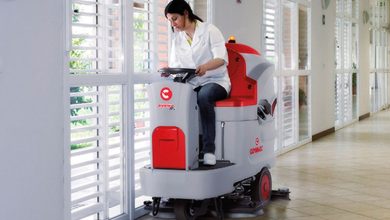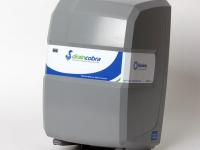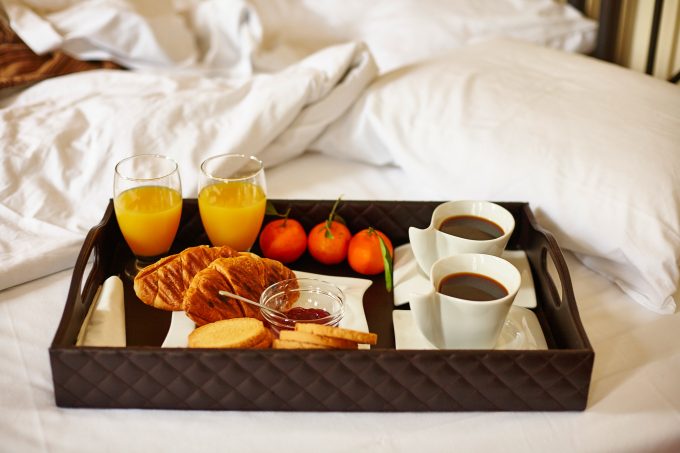How High are Today’s Standards?
Cleaning is an irrevocably huge part of running and maintaining a resort, hotel, motel or any other accommodation providing property.
More questions and reviews are posted by guests on sites such as TripAdvisor regarding room cleanliness than room location and this is unlikely to change. In fact, the more guests are able to investigate, compare and review room cleanliness through sites such as these, the more crucial it will become for resorts and hotels to raise their cleaning standards.
Nilfisk SC350As such, properties need to be extra careful when it comes to purchasing cleaning equipment if they want to ensure that the upkeep of their rooms is kept at the highest possible standard. One area that commonly falls under guest scrutiny, is the floor; as there is nothing worse than sticky tiles or a bad smelly carpet. But are the commercial floor cleaners currently available good enough to meet the rising demand for perfection?
Paul Yardley, of Yardley Hospitality, has come to have much insight in this field and chose to share some knowledge regarding the overall development of commercial floor cleaners today. He explained that “as of 2011, scrubber dryer manufacturers are moving towards small mobile units such as the Nilfisk SC350, which has a 37cm working width and is light weight. Also, for ease of use, the unit has a rotating brush and squeegee head to allow the unit to pick up in forward and reverse, allowing this piece of technology to get into areas that had been confined to mop and buckets in the past.”
This, he claims, has been a huge technological jump forward aiding resorts to meet the current wave of guests demanding perfection.
“It also has a full gel battery so the unit can be stored upright, whereas in the past units would need much larger storage space in the cleaners room.”
Mr Yardley also noted, “The scrubber dryer took over from the mop and bucket in most areas except the smaller areas that could not justify the expense or the restriction of the over sized units, so this now is a thing of the past.”
Following on from this discussion, there is much ongoing debate over which products are the ‘right machine’ for any given job. Mr Yardley maintained that, “for large hard floor areas, 500 squared meters and more, a scrubber dryer is the most suited; steamers are the better choice for hard floor surfaces under 500 squared meters; and a polisher would be best for coated floors.”
In terms of vacuum cleaners though, “Uprights are the most effective vacuuming as far as productivity and dirt removal as there are two actions: brush agitation and suction. The down side to upright vacuuming is the weight of the upright on the operators arm when vacuuming.
 Hydropro“Alternatively, back packs are proven to provide the best productivity of the three options, cost is low and can have a power head option; the only down side is capacity, with most units having 4 to 5 litre dust bag bags and therefore the vacuum will need emptying more regularly. Canister vacuums, on the other hand, have an advantage of larger capacities and therefore need less empting than traditionally large vacuum motors. Their down side though, is in less productivity gains.”
Hydropro“Alternatively, back packs are proven to provide the best productivity of the three options, cost is low and can have a power head option; the only down side is capacity, with most units having 4 to 5 litre dust bag bags and therefore the vacuum will need emptying more regularly. Canister vacuums, on the other hand, have an advantage of larger capacities and therefore need less empting than traditionally large vacuum motors. Their down side though, is in less productivity gains.”
Touching back on development in cleaning equipment technology, Mr Yardley established that, “The latest development is long life commercial battery operated vacuums in canister and back pack form. For example, the GD5 back pack and the GD911 from Nilfisk. OH&S is driving the fact of cordless vacuum from a safety issue with people tripping over cords and electrical shock from cord damage”.
The Carpet Rug Institute recently brought out a range of tough standards for soil removal and indoor air quality. Amanda Cummins, business development manager of Pacvac, supplier of vacuum cleaners to the industry, had plenty to discuss on the matter.
“CRI is an internationally recognised independent body with a Green Label Testing Program for vacuum cleaners,” she began. “The Green Label certification assures that the vacuum has met the above stringent requirements and as a result improved indoor air quality is achieved. Each vacuum cleaner is tested on three key performance factors for certification: Soil removal – set amount of soil removal based tested using NASA enhanced x-ray fluorescence technology; Dust containment – amount of dust particles release in the air based on tests more stringent than the National Ambient Air Quality Standards; and Carpet appearance retention – based on one year of normal vacuum use.”
According to Ms Cummins, “Pacvac’s priorities are to provide cleaners with comfortable, durable and efficient products of the highest quality with minimal effect on the environment.”
Glide 300One of Pacvac’s products, for example, the Superpro 700 back pack vacuum cleaner has passed the above independent laboratory tests it was submitted for by Pacvac, and now has CRI Green Label certification. “The Green Label certification assures cleaners and their customers that the Superpro 700 provides an exceptionally high standard of indoor air quality and carpet maintenance compared to non-certified vacuum cleaners. That’s better for both the cleaners using the back pack and their customers, not to mention the environment.”
Another new development in cleaning technology, the Hydropro Series is a range of wet and dry range of vacuum cleaners. With three distinct canister sizes (21l, 36l, and 76l) there’s a Hydropro suitable for every commercial job, large or small, wet or dry. These products are made of 100% polypropolene plastic, have a hydro-sponge filter and unbreakable latches, boast non-marking wheels and the Hydropro 76 has easy tip and drain disposal.
Similarly, advancements have been made in terms of noise so that cleaning can be done early in the morning without fear of waking guests in neighbouring rooms. Pacvac has developed the Glide Wispa 300, an advanced lightweight canister vacuum cleaner that miraculously has a volume control switch (Wispa mode: 62dB(a)), HEPA filtration to maximise indoor air quality, 1300 watt motor, five castor wheels to ensure sturdy mobility, a safety bypass valve, an 18m power cord and weighs only 5.8kg.
It comes down, once again, to a simple matter of quality.
If accommodation properties invest time into searching through all their options and purchase the good quality equipment that meets both their needs and their guests standards, then not only will they rise to the ever heightening expectations of their guests but stay one step ahead of the game.

AccomNews is not affiliated with any government agency, body or political party. We are an independently owned, family-operated magazine.







